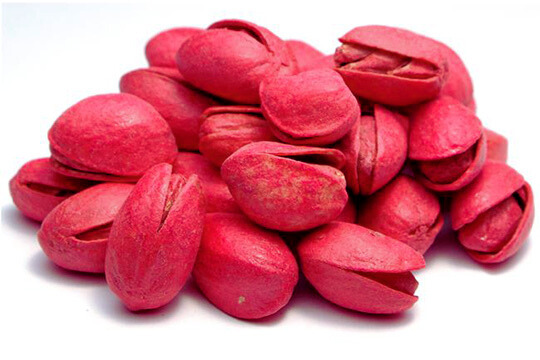Introduction
Pistachios, a beloved snack, have a fascinating history rooted in cultural practices. This article delves into the intriguing query: Why were pistachios dyed red? Join us on a journey through time, exploring the origins, benefits, and controversies surrounding this vibrant twist on a classic treat.
Historical Background of Red Pistachios
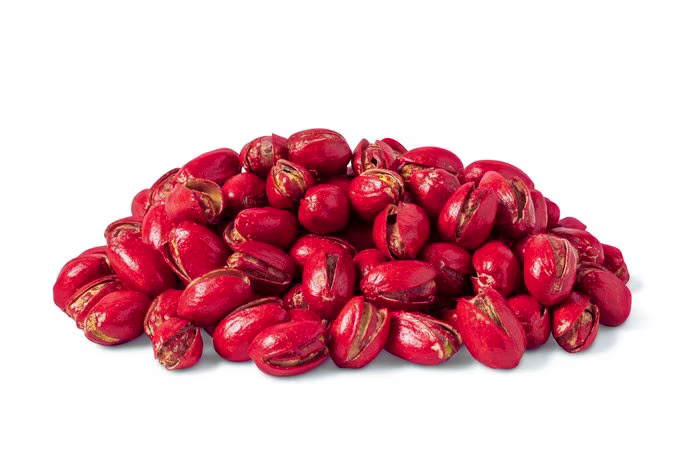
The story of red pistachios is a fascinating journey through time, intertwining cultural practices, culinary innovation, and the evolution of a beloved snack. Let’s delve into the historical background to unravel the origins and transformations that have given us the iconic red pistachios we know today.
Origins in the Middle East
The pistachio, scientifically known as Pistacia vera, is native to the Middle East, with historical roots dating back thousands of years. Initially cultivated in regions such as Iran, Iraq, and Syria, pistachios held cultural significance as a symbol of abundance and prosperity.
Cultural Traditions and Symbolism
The practice of dyeing pistachios red can be traced back to cultural traditions in the Middle East. Red, a color often associated with joy and celebration, became intertwined with the pistachio’s identity. The process of dyeing involved immersing the shells in a natural dye bath, adding vibrancy to the nuts, and turning them into a visual delight.
Arrival in the United States
While red pistachios had been a cherished snack in the Middle East for centuries, their journey to the United States marked a new chapter in their history. In the mid-20th century, pistachios, including the red variety, found their way to American markets.
Dyeing Process in the U.S.
In the United States, the dyeing of pistachios became a distinctive practice. The traditional red hue, achieved through a dyeing process using food-grade colorants, captivated consumers and set red pistachios apart from their natural green counterparts.
Popularity and Cultural Impact
The unique appearance of red pistachios captured consumers’ attention, turning them into a cultural phenomenon. The vibrant red color became synonymous with special occasions, holidays, and festivities, adding a touch of flair to snack bowls and culinary creations.
Evolution of Production Techniques
Over time, the production techniques for red pistachios evolved. While natural sources like beet juice were initially used for dyeing, modern methods incorporated food-grade synthetic dyes. These advancements aimed at enhancing the efficiency and consistency of the dyeing process.
Global Recognition and Consumption
The popularity of red pistachios expanded globally, transcending cultural boundaries. These visually striking nuts became sought-after snacks, appreciated for their cultural connections, unique appearance, and rich history embedded in their vibrant shells.
Cultural Resonance Today
In the present day, red pistachios continue to be enjoyed for their cultural resonance and distinctive aesthetic. Whether as a snack at celebrations or as a creative ingredient in culinary endeavors, red pistachios stand as a testament to the enduring intersection of tradition, innovation, and the shared joy of indulging in a delightful treat.
The historical journey of red pistachios reflects not only the evolution of a beloved snack but also the cultural tapestry that connects people across time and borders.
Why Were Pistachios Dyed Red?
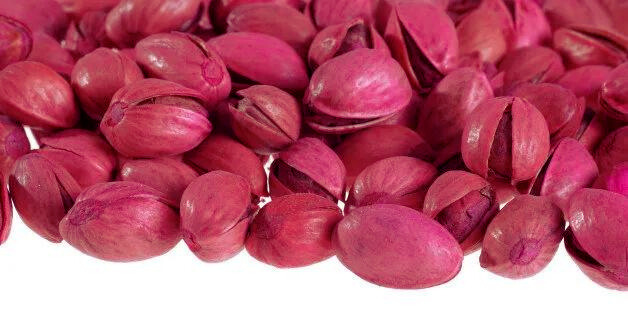
The tradition of dyeing pistachio red is a fascinating cultural practice with roots that stretch back through centuries. This culinary custom, often associated with Middle Eastern cultures, has evolved into a symbol of celebration, luck, and a distinctive aesthetic in the world of snacks. Let’s explore the reasons behind the vibrant red hue of pistachios.
Cultural Symbolism
Celebration and Joy:
- The color red holds cultural significance, symbolizing joy, luck, and celebration in many Middle Eastern societies.
- Dyeing pistachios red became a way to elevate these nuts beyond a simple snack, turning them into tokens of happiness and prosperity during special occasions.
Traditional Practices
Culinary Tradition:
- The practice of dyeing pistachios red is deeply rooted in culinary traditions, where the visual appeal of food is considered an integral part of the dining experience.
- Red pistachios became a staple during holidays, weddings, and other festive gatherings, embodying cultural rituals.
Aesthetic Appeal
Distinctive Appearance:
- The red hue transforms the appearance of pistachios, making them visually striking and easily distinguishable.
- Consumers are drawn to the unique and vibrant color, turning the act of snacking into a multisensory experience.
Cultural Significance
Symbol of Luck:
- Red pistachios are often associated with luck and good fortune, making them a popular choice as a symbolic offering during celebrations and important life events.
- The red color is believed to bring positive energy and blessings, adding a layer of cultural depth to the act of consuming these nuts.
Evolution Over Time
Market Appeal:
- As pistachios gained popularity beyond their region of origin, the red variety became an iconic representation of this beloved nut.
- The distinct appearance contributed to their market appeal, making them stand out in a sea of snacks.
Culinary Creativity
Artistry in Food Presentation:
- The red pistachios are not just a culinary choice; they are a canvas for creativity in food presentation.
- Chefs and home cooks alike use red pistachios to add a burst of color and flair to a variety of dishes, from desserts to salads.
Cultural Identity
Preserving Tradition:
- The continued practice of dyeing pistachios red is a way of preserving cultural identity and passing down traditions from generation to generation.
- It reinforces a connection to heritage, allowing individuals to celebrate their roots through a shared culinary experience.
In essence, the act of dyeing pistachios red transcends the culinary realm; it is a celebration of culture, a nod to tradition, and a testament to the diverse ways in which food can be an expression of joy and cultural identity.
Benefits of Red Pistachios
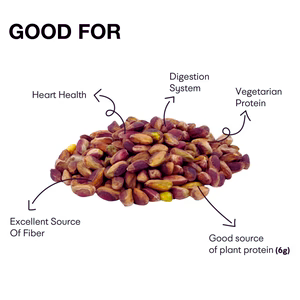
Red pistachios, beyond their visually striking appearance, offer a spectrum of nutritional benefits that contribute to their appeal as a snack. Let’s delve into the advantages that these crimson-hued nuts bring to the table.
Nutritional Value
Red pistachios maintain the same core nutritional profile as their natural counterparts. They are a powerhouse of essential nutrients, including:
- Protein: Pistachios, in general, are an excellent source of plant-based protein, making them a valuable addition to vegetarian and vegan diets.
- Healthy Fats: The monounsaturated and polyunsaturated fats in pistachios contribute to heart health, supporting lower LDL (bad) cholesterol levels.
- Fiber: Rich in dietary fiber, pistachios aid digestion and promote a feeling of fullness, making them a satisfying and nutritious snack.
- Vitamins and Minerals: Red pistachios boast an array of vitamins and minerals, such as vitamin B6, thiamine, phosphorus, and copper, contributing to overall health and well-being.
Antioxidant Properties
The red dye used in pistachios, often derived from natural sources, may also offer antioxidant properties. Antioxidants play a crucial role in neutralizing free radicals, potentially reducing oxidative stress and supporting cellular health.
Visual Appeal and Psychological Impact
While not a direct health benefit, the vibrant red color of these pistachios can positively influence consumer perception. The visually appealing nature of red pistachios may enhance the overall eating experience, invoking a sense of indulgence and festivity.
Culinary Versatility
Red pistachios add color to various culinary creations, from desserts to salads. Their versatility in sweet and savory dishes makes them a popular choice among chefs and home cooks.
It’s essential to note that while the benefits of red pistachios align with those of natural pistachios, moderation is key. Like any snack, enjoying them as part of a balanced diet contributes to a wholesome approach to nutrition. Whether you savor them for their nutritional content, aesthetic appeal, or culinary adaptability, red pistachios stand as a delightful and healthful treat.
The Dyeing Process
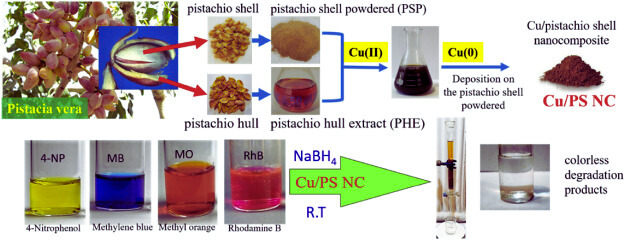
The transformation of pistachios from their natural green hue to the vibrant red variety involves a fascinating dyeing process. Understanding the intricacies of this method provides insights into the craftsmanship and cultural traditions surrounding these colorful nuts.
Traditional Methods
1. Harvesting and Sorting:
The process begins with the harvesting of mature pistachio nuts. These nuts undergo meticulous sorting to ensure uniformity in size and quality.
2. Soaking in Brine:
The pistachios are then soaked in a brine solution, often containing salt. This step not only enhances flavor but also prepares the nuts for the dyeing process.
3. Application of Dye:
The dyeing phase is where the magic happens. The pistachios are submerged in a dye bath, traditionally using natural sources like beet juice or red vegetable dye. The nuts absorb the dye, resulting in the vivid red coloration.
4. Drying:
Following the dyeing process, the pistachios are carefully dried. This step is crucial to set the color and prevent any bleeding of the dye.
Modern Trends
1. Mechanized Dyeing:
In contemporary settings, mechanized processes streamline the dyeing of pistachios. This often involves conveyor systems where the nuts move through dye baths and drying chambers efficiently.
2. Variety of Dyes:
While traditional methods rely on natural sources for dye, modern techniques may incorporate a variety of food-grade dyes to achieve the desired color. This allows for greater flexibility and precision in color application.
3. Quality Control:
Advanced technologies enable stringent quality control measures, ensuring that each pistachio meets the visual and taste standards set by producers.
Impact on the Pistachio Industry
The art of dyeing pistachios not only adds a burst of color to snack bowls but also influences consumer choices and market trends. Red pistachios, with their distinctive appearance, often stand out on store shelves, contributing to their popularity.
Understanding the dyeing process provides an appreciation for the craftsmanship involved, bridging the gap between traditional and modern production methods. Whether dyed using age-old practices or contemporary techniques, red pistachios continue to captivate consumers with their visual allure and cultural significance.
Impact on the Pistachio Industry
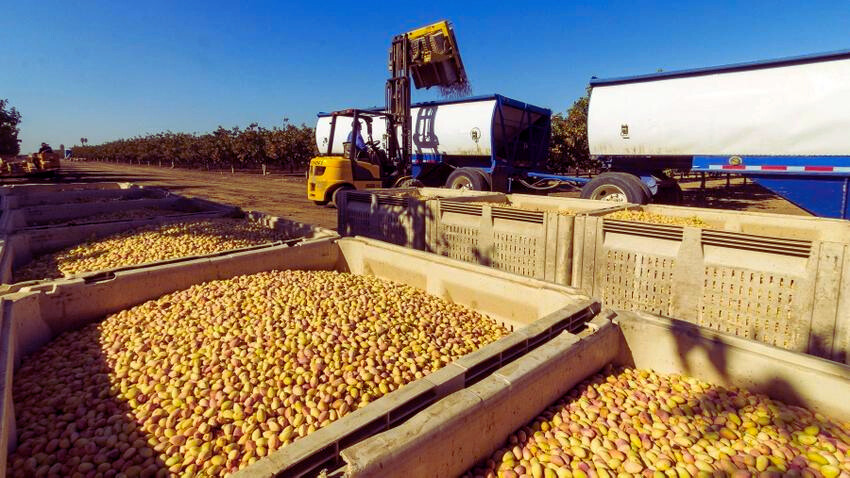
The practice of dyeing pistachio red extends beyond aesthetics; it has a profound impact on the pistachio industry, influencing consumer choices, market trends, and economic dynamics.
Consumer Appeal and Preferences
1. Visual Allure:
The vibrant red coloration enhances the visual allure of pistachios, making them stand out among other snack options. This eye-catching feature contributes to impulse purchases and draws consumers seeking a unique and visually appealing treat.
2. Cultural Significance:
Red pistachios carry cultural significance, connecting consumers to traditions and celebrations. The association with luck, prosperity, and special occasions adds a layer of emotional appeal that resonates with a diverse audience.
Market Trends and Economic Impact
1. Product Differentiation:
Red pistachios provide a distinct product in the market, allowing producers to differentiate their offerings. This variety caters to consumers looking for a novel and culturally rich snacking experience.
2. Global Demand:
The popularity of red pistachios has transcended regional boundaries. As a result, there is a growing global demand for these uniquely colored nuts, expanding market reach and contributing to the globalization of pistachio consumption.
3. Premium Pricing:
The visual appeal and cultural associations with red pistachios often position them as a premium product. This allows producers to command higher prices, contributing to increased profitability within the industry.
Technological Advancements
1. Efficiency in Production:
Modern dyeing techniques, aided by technological advancements, have improved the efficiency of pistachio production. Automated processes and quality control measures ensure a consistent and high-quality end product.
2. Innovation in Packaging:
The visual impact of red pistachios extends to packaging innovations. Creative and transparent packaging designs showcase the vibrant colors, further enticing consumers and contributing to product recognition.
Environmental and Social Considerations
1. Sustainable Practices:
Increasing consumer awareness of environmental concerns has led to a push for sustainable practices in the pistachio industry. Producers are exploring eco-friendly dyeing methods, aligning with a growing demand for environmentally conscious products.
2. Community Engagement:
The cultivation and processing of red pistachios often have deep-rooted ties to local communities. The industry’s impact extends beyond economic factors, fostering community engagement and preserving cultural traditions.
In conclusion, the impact of dyeing pistachios red goes beyond surface-level aesthetics. It influences consumer choices, market dynamics, and the overall economic landscape of the pistachio industry, demonstrating the interconnectedness of cultural practices, consumer preferences, and industry trends.
The Science Behind Dyeing
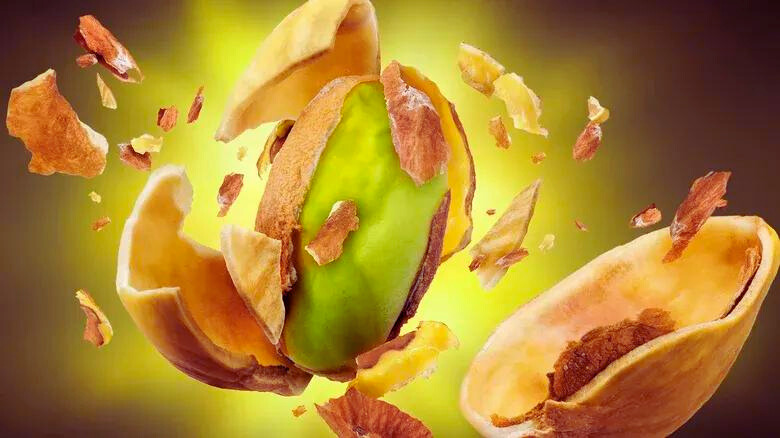
The transformation of pistachios from their natural green state to the vibrant red variety involves a captivating interplay of chemistry and craftsmanship. Understanding the science behind the dyeing process sheds light on the intricate chemical reactions that give these nuts their distinctive hue.
Chemical Processes
1. Dye Absorption:
The pistachios are immersed in a dye bath, typically containing food-grade colorants. The outer layer, or the shell, of the pistachio, is porous, allowing it to absorb the dye. This absorption is a crucial step in achieving the desired coloration.
2. Chemical Bonds:
Once absorbed, the dye forms chemical bonds with the components of the pistachio shell. This bonding process ensures that the color becomes an integral part of the nut, resisting easy removal during handling or consumption.
3. pH Regulation:
The pH level of the dye bath plays a significant role in determining the final color outcome. Producers carefully regulate the acidity or alkalinity to achieve the desired shade of red. This precision in pH control is vital for consistent and reproducible results.
Traditional vs. Modern Approaches
1. Natural Sources:
Traditional methods often utilized natural sources for dye, such as beet juice or other plant-based colorants. The chemical composition of these natural dyes contributes to the unique flavors and aromas associated with traditionally dyed pistachios.
2. Synthetic Dyes:
In modern practices, food-grade synthetic dyes may be used. These dyes are formulated to meet stringent quality standards, providing a broader spectrum of colors and allowing for customization based on consumer preferences.
Color Stability and Quality Control
1. Drying Process:
After dye absorption, the pistachios undergo a meticulous drying process. This step is crucial for setting the color and ensuring that it remains stable over time. Improper drying could result in color bleeding or uneven distribution.
2. Quality Assurance:
Advanced imaging systems and quality control measures are employed to assess the color consistency of each pistachio. This quality assurance step guarantees that the final product meets visual standards and aligns with consumer expectations.
Understanding the scientific nuances of the dyeing process underscores the craftsmanship involved in producing red pistachios. From the molecular level to the visual impact, the science behind dyeing contributes to the unique and culturally significant experience of enjoying these vibrant nuts.
Consumer Perception

The consumption experience extends beyond flavor; it encompasses the visual appeal and psychological impact of red pistachios. Understanding consumer perception sheds light on how individuals engage with and appreciate these vibrant nuts.
Aesthetic Allure
1. Visual Appeal:
The striking red coloration of pistachios captivates consumers, making them stand out in snack displays. The visual allure contributes to impulse purchases, drawing attention to these nuts among other options.
2. Cultural Significance:
The cultural associations tied to red pistachios enhance their appeal. Consumers often view them as more than a snack; they represent tradition, luck, and celebration, adding a layer of emotional connection to the eating experience.
Taste Preferences
1. Psychological Impact:
The color of food can influence taste perceptions. Studies suggest that the visual appeal of red pistachios may enhance the overall eating experience, influencing consumers’ expectations and satisfaction.
2. Positive Associations:
Consumers may associate the vibrant red color with positive emotions and festive occasions. This positivity can translate into a more enjoyable snacking experience, impacting repeat purchases and brand loyalty.
Preferences and Reactions
1. Culinary Versatility:
Red pistachios’ vibrant color makes them a popular choice for culinary creations. The visual impact enhances the aesthetics of dishes, appealing to consumers looking for both flavor and presentation.
2. Nostalgia and Tradition:
For some consumers, red pistachios evoke a sense of nostalgia, reminiscent of childhood treats or cultural celebrations. This nostalgic connection can drive purchasing decisions and create a sense of comfort.
Marketing and Packaging
1. Brand Recognition:
The vibrant color of red pistachios contributes to brand recognition. Creative packaging designs that showcase the nuts’ visual appeal play a crucial role in attracting consumers and establishing a memorable brand image.
2. Transparent Communication:
Transparent communication about the dyeing process and the cultural significance of red pistachios can positively influence consumer trust. Brands that provide this information may connect on a deeper level with their audience.
Environmental and Health Awareness
1. Eco-Friendly Practices:
With growing environmental awareness, consumers may appreciate brands that prioritize eco-friendly dyeing practices. This consideration aligns with a broader trend of sustainability in food choices.
2. Health Consciousness:
Consumers seeking nutritious snacks may be drawn to the health benefits of pistachios, whether natural or dyed. The vibrant red color, coupled with perceived health advantages, positions these nuts as a wholesome choice.
Understanding consumer perception goes beyond taste preferences; it involves recognizing the emotional, cultural, and visual factors that contribute to the enjoyment of red pistachios. Brands that leverage these insights can create a more meaningful connection with their audience and cater to evolving consumer expectations.
Red Pistachios in Popular Culture

Beyond being a delightful snack, red pistachios have found their way into the fabric of popular culture, leaving an indelible mark in various forms of media, literature, and everyday references.
References in Media
1. Film and Television:
Red pistachios often make cameo appearances in films and television shows, where their vibrant color serves as a visual cue or adds a touch of whimsy to scenes. From classic comedies to modern dramas, these nuts have become iconic props.
2. Advertising Campaigns:
Advertisers have leveraged the visual appeal of red pistachios to create memorable campaigns. The distinct coloration becomes a focal point, making these nuts instantly recognizable in marketing efforts that seek to stand out.
Culinary Creations
1. Desserts and Confections:
Red pistachios, with their vivid color, are a popular choice for dessert garnishes and confections. Pastry chefs and home bakers alike use them to add a burst of color and flavor to cakes, cookies, and ice creams.
2. Culinary Shows and Magazines:
Cooking shows and culinary magazines often feature red pistachios as a visually appealing ingredient. Chefs highlight their use not only for taste but also for the vibrant aesthetics they bring to dishes.
Social Media and Influencers
1. Instagram and Food Blogging:
Red pistachios frequently grace the pages of food influencers and bloggers on platforms like Instagram. Their visually stunning appearance makes them a favorite subject for food photography and garnishes.
2. Cultural Challenges and Trends:
Social media challenges and trends sometimes revolve around unique and visually striking foods. Red pistachios, with their cultural connotations and vibrant color, have become a part of these online movements.
Everyday References
1. Nostalgia and Memories:
For many, the sight of red pistachios triggers nostalgia, recalling fond memories of enjoying these nuts during holidays, family gatherings, or as a special treat. This nostalgic connection often shapes the perception of red pistachios in everyday life.
2. Cultural Celebrations:
Red pistachios are frequently associated with cultural celebrations and festive occasions. Their presence during holidays and ceremonies adds a touch of tradition, making them an integral part of cultural festivities.
Red pistachios, with their captivating color and cultural significance, have transcended their role as a snack to become cultural icons. From the silver screen to social media and beyond, these vibrant nuts continue to leave a colorful imprint on popular culture, delighting audiences and contributing to the rich tapestry of culinary and visual experiences.
Personal Experiences with Red Pistachios
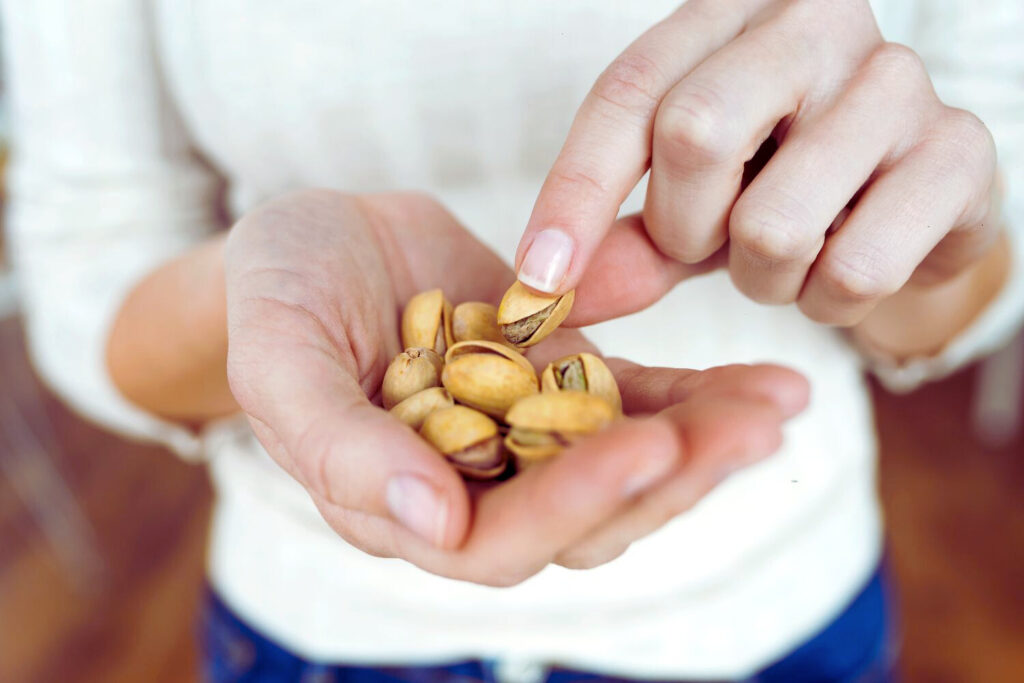
As a lover of culinary delights, I’ve had the pleasure of experiencing the unique charm of red pistachios firsthand. These vibrant nuts have not only tantalized my taste buds but have also woven themselves into the fabric of my personal memories.
Festive Delights
During festive seasons and family gatherings, the appearance of red pistachios has become synonymous with joy and celebration. The vibrant red hues add a festive touch to snack bowls, creating a visual spectacle that elevates the entire culinary experience.
Nostalgic Indulgence
Growing up, red pistachios were a special treat—a burst of color and flavor that turned ordinary moments into extraordinary ones. The act of cracking open the shells and savoring the crimson nuts became a cherished part of my childhood, creating memories that linger with each delightful crunch.
Culinary Adventures
As someone who enjoys experimenting in the kitchen, red pistachios have become a staple in my culinary endeavors. Whether crushed and sprinkled over salads for a visual pop or incorporated into desserts for both taste and aesthetics, these nuts add a dynamic element to my culinary creations.
Visual Appeal in Everyday Life
Beyond their taste, the visual appeal of red pistachios has made them a staple in my pantry. The vibrant color not only draws the eye but also inspires creativity in how I present and enjoy these nuts. From snacking to garnishing dishes, red pistachios bring a touch of artistry to everyday moments.
Cultural Connections
Red pistachios, with their cultural significance, have also deepened my appreciation for the traditions they represent. Understanding the symbolism behind the red dye and its ties to luck and prosperity has added a layer of cultural connection to my enjoyment of these delightful nuts.
Shared Moments
Some of the most memorable experiences with red pistachios involve sharing them with friends and loved ones. Whether exchanged during casual conversations or offered as a gesture of hospitality, red pistachios have a way of fostering connections and creating shared moments of delight.
In conclusion, my personal experiences with red pistachios extend beyond the realm of mere snacking. They embody festive traditions, childhood nostalgia, culinary inspiration, and cultural connections—a testament to the multifaceted nature of these vibrant and culturally rich nuts.
Debunking Myths About Red Pistachios
Red pistachios, with their vibrant appearance and cultural significance, have been the subject of various myths and misconceptions. Let’s unravel the truth behind some of these common beliefs to paint a more accurate picture of these iconic nuts.
Myth 1: Red Dye is Harmful
Reality: The red dye used in pistachios is typically a food-grade dye, often derived from natural sources like beet juice. These dyes are considered safe for consumption and are subject to strict quality regulations. Enjoying red pistachios in moderation poses no harm to health.
Myth 2: Red Pistachios are Genetically Modified
Reality: Contrary to popular belief, the red color in pistachios is not a result of genetic modification. Traditional and modern dyeing processes involve the application of colorants to the outer shell, imparting the characteristic red hue. The pistachio nut inside remains unchanged and retains its natural properties.
Myth 3: Red Pistachios are a Different Variety
Reality: Red pistachios and their natural counterparts belong to the same pistachio tree species. The red color is a result of the dyeing process and does not indicate a different pistachio variety. The nuts inside are nearly identical in taste and nutritional content.
Myth 4: Red Pistachios are Less Natural
Reality: While the red dyeing process is an additional step, it doesn’t make red pistachios any less natural. The dyeing methods often use food-grade colorants derived from natural sources. The pistachios themselves undergo the same cultivation and harvesting processes as their natural counterparts.
Myth 5: Red Pistachios Have Artificial Flavors
Reality: Red pistachios typically do not have artificial flavors added to them. The color is achieved through dyeing, and the flavor remains that of the natural pistachio. Some may associate the red variety with a slightly different taste due to the dye, but it’s not a result of artificial flavors.
Myth 6: Red Pistachios Are Always Dried
Reality: The red dyeing process includes a careful drying step to set the color. However, this does not mean that red pistachios are always dried. They undergo the same harvesting and drying processes as natural pistachios, ensuring that they maintain quality and taste.
Myth 7: Red Pistachios are Rare
Reality: While red pistachios may not be as common as their natural counterparts, they are not rare. They are produced on a significant scale and are widely available, especially in regions where the cultural tradition of dyeing pistachios persists.
Debunking these myths helps demystify the narrative around red pistachios, showcasing them as a safe, natural, and culturally significant snack. Enjoying these vibrant nuts can be a delightful experience without succumbing to common misconceptions.
Environmental Considerations in Pistachio Production
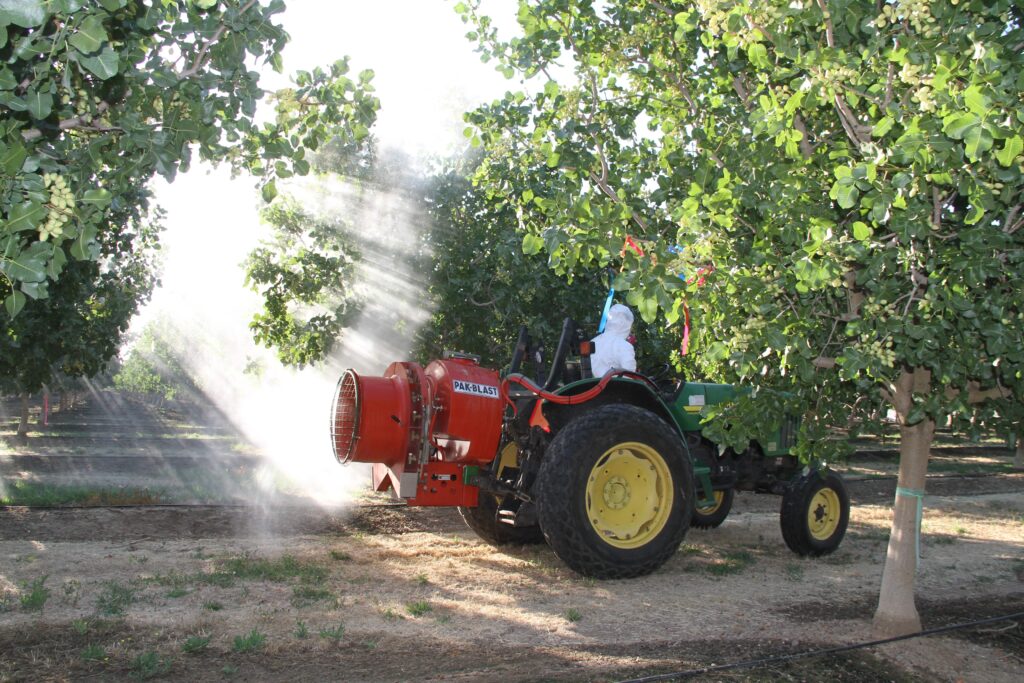
As consumers increasingly prioritize sustainable and environmentally friendly practices, it’s essential to examine the environmental aspects of pistachio production, including the dyeing process of red pistachios.
Agricultural Practices
1. Water Usage:
Pistachio cultivation requires significant water resources. In regions facing water scarcity, the high water demand of pistachio orchards can contribute to environmental stress. Sustainable water management practices, such as efficient irrigation systems, can mitigate this impact.
2. Land Use and Biodiversity:
The expansion of pistachio orchards may lead to changes in land use and potential impacts on local biodiversity. Implementing agroecological approaches that integrate pistachio cultivation with local ecosystems can help preserve biodiversity.
Dyeing Process
1. Dye Sources:
The sources of dyes used in pistachio coloring can vary. While natural sources are preferable for environmental reasons, some synthetic dyes may have ecological consequences. Prioritizing eco-friendly and sustainably sourced dyes can mitigate environmental impact.
2. Waste Management:
The dyeing process generates waste, and proper disposal is crucial. Implementing waste management practices, such as recycling dyeing byproducts, can reduce the environmental footprint associated with the production of red pistachios.
Packaging and Transportation
1. Packaging Materials:
The choice of packaging materials can significantly impact the environmental footprint. Opting for eco-friendly and recyclable packaging materials contributes to sustainability efforts.
2. Transportation Emissions:
The transportation of pistachios from orchards to consumers generates carbon emissions. Sustainable transportation practices, such as optimizing shipping routes and using eco-friendly vehicles, can minimize this impact.
Sustainability Certifications
1. Certifications and Standards:
Pistachio producers adhering to recognized sustainability certifications and standards demonstrate a commitment to environmentally responsible practices. Certifications like Rainforest Alliance or organic certifications signify a dedication to eco-friendly approaches.
Community Engagement
1. Local Community Impact:
Engaging with local communities is integral to sustainable pistachio production. Practices that consider the social and economic well-being of local residents contribute to a more environmentally conscious industry.
2. Education and Awareness:
Educating both producers and consumers about the environmental impact of pistachio production fosters awareness. Informed choices by both parties can drive positive change towards more sustainable practices.
In conclusion, addressing environmental concerns in pistachio production requires a holistic approach. From sustainable agricultural practices to eco-friendly dyeing processes and thoughtful packaging, the pistachio industry has the potential to align with environmental stewardship, meeting the demands of eco-conscious consumers and contributing to a more sustainable future.
Health Considerations in Consuming Red Pistachios
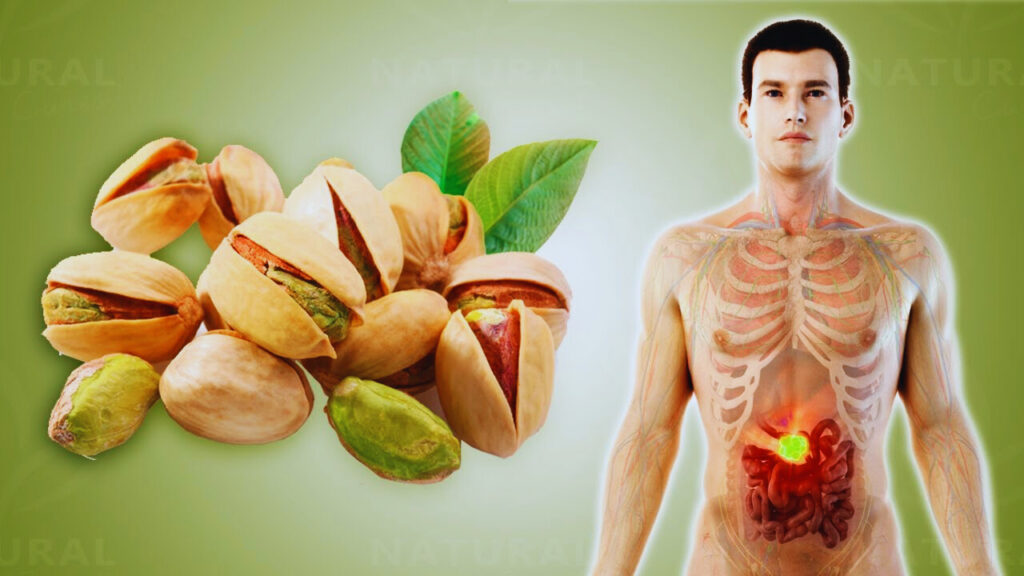
Red pistachios, with their vibrant color and cultural significance, not only offer a delightful snacking experience but also come with health considerations that contribute to their overall nutritional profile.
Nutritional Value
1. Protein Content:
Pistachios, whether natural or dyed red, are a good source of plant-based protein. Protein is essential for muscle repair, immune function, and overall body maintenance.
2. Healthy Fats:
Both varieties contain monounsaturated and polyunsaturated fats, which are heart-healthy and support the reduction of LDL (bad) cholesterol levels.
3. Dietary Fiber:
Rich in dietary fiber, pistachios aid digestion and promote a feeling of fullness. Fiber is crucial for a healthy digestive system and can contribute to weight management.
4. Vitamins and Minerals:
Red pistachios, like their natural counterparts, are packed with essential vitamins and minerals such as vitamin B6, thiamine, phosphorus, and copper, supporting various bodily functions.
Antioxidant Properties
1. Red Dye and Antioxidants:
Some natural sources used for red dyeing may contribute antioxidants to red pistachios. Antioxidants play a role in neutralizing free radicals, potentially reducing oxidative stress and supporting overall health.
2. Protective Effects:
The antioxidants present in pistachios may have protective effects on cells, contributing to cellular health and potentially reducing the risk of chronic diseases.
Caloric Content
1. Moderation is Key:
While pistachios are nutrient-dense, they are also calorie-dense. Consuming them in moderation is crucial, especially for individuals managing their calorie intake.
2. Weight Management:
The combination of protein, healthy fats, and fiber in pistachios can contribute to a feeling of fullness, aiding in weight management when included as part of a balanced diet.
Allergies and Sensitivities
1. Allergen Considerations:
Individuals with nut allergies should exercise caution when consuming pistachios, including the red variety. Allergic reactions can range from mild to severe, and those with known allergies should avoid pistachios altogether.
2. Dye Sensitivity:
Some individuals may be sensitive to food dyes. While natural sources are often used for red pistachios, those with sensitivities should be mindful and check the ingredient list if available.
Overall Dietary Context
1. Incorporating Variety:
Red pistachios, as part of a diverse and balanced diet, can contribute to overall nutritional well-being. Including a variety of nuts and seeds provides a range of nutrients beneficial for health.
2. Consulting a Healthcare Professional:
Individuals with specific health conditions or dietary concerns should consult with healthcare professionals for personalized advice on including red pistachios in their diet.
In conclusion, red pistachios, when enjoyed in moderation and as part of a balanced diet, offer a range of nutritional benefits. Understanding their health considerations allows individuals to make informed choices that align with their overall well-being.
Red Pistachios vs. Natural: Unveiling the Distinctions
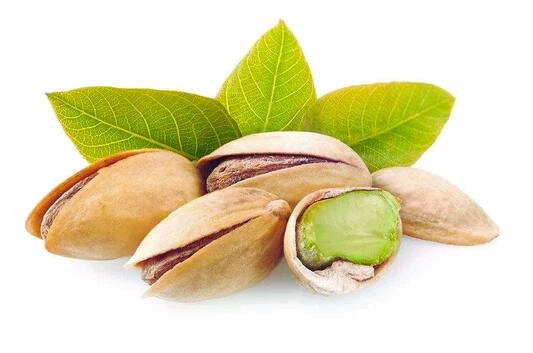
The choice between red pistachios and their natural counterparts goes beyond aesthetics, delving into the realms of tradition, taste, and cultural significance. Let’s explore the distinctions between these two variations to help you make an informed choice based on your preferences.
1. Color and Appearance
Red Pistachios:
- Vibrant Hue: The most obvious distinction is the striking red color of the shells, catching the eye and adding a visual flair to the overall appearance.
- Cultural Symbolism: The red hue often carries cultural significance, associated with luck, prosperity, and festive occasions.
Natural Pistachios:
- Earthy Green: Natural pistachios maintain their earthy green hue, reflecting the original color of the pistachio shell.
- Classic Appeal: For those who appreciate the classic and natural look, the original green pistachios remain a timeless choice.
2. Dyeing Process
Red Pistachios:
- Dye Application: Red pistachios undergo a dyeing process where they are soaked in a dye bath to achieve their vibrant color.
- Cultural Tradition: The dyeing process is often rooted in cultural traditions, adding layers of history and symbolism to the practice.
Natural Pistachios:
- Unaltered Appearance: Natural pistachios go through minimal processing, allowing their original color to shine without the addition of dyes.
- Authenticity: The natural variety is celebrated for its authenticity, appealing to those who prefer foods with minimal alterations.
3. Flavor Profile
Red Pistachios:
- Slight Taste Variation: Some individuals suggest a subtle difference in taste due to the dyeing process, although the impact on flavor is generally minimal.
- Cultural Associations: The cultural significance of red pistachios may enhance the overall experience, influencing the perception of taste.
Natural Pistachios:
- Pure Pistachio Flavor: Natural pistachios deliver the unadulterated taste of the pistachio nut without the influence of added dyes.
- Versatility in Culinary Uses: The natural variety’s neutral appearance makes it a versatile ingredient in various culinary applications.
4. Availability and Popularity
Red Pistachios:
- Regional Popularity: Red pistachios are often associated with specific regions or cultural practices, influencing their popularity in certain areas.
- Distinctive Presence: The visually distinctive appearance of red pistachios may make them stand out on store shelves.
Natural Pistachios:
- Global Accessibility: Natural pistachios, being the original variety, are widely available globally.
- Classic Appeal: Their classic green appearance appeals to a broad audience seeking the quintessential pistachio experience.
5. Consumer Preference
Red Pistachios:
- Cultural Connection: Individuals with cultural ties to the tradition of red pistachios may gravitate towards this variety.
- Visual Appeal: Those who appreciate visually vibrant and culturally symbolic foods may prefer red pistachios.
Natural Pistachios:
- Purists’ Choice: Individuals who prioritize a purist approach to food, valuing minimal processing, may lean towards natural pistachios.
- Versatile Usage: Natural pistachios are favored by those who enjoy the flexibility of using them in various culinary applications.
In conclusion, the choice between red pistachios and natural pistachios is a matter of personal preference, cultural connection, and aesthetic appeal. Whether you opt for the vibrant red or the classic green, both variations offer a delightful and nutritious snacking experience.
Conclusion
In summary, the journey into the world of red pistachios unveils a rich tapestry of history, culture, and science. From traditional practices to modern trends, this article has explored the why behind “Why Were Pistachios Dyed Red,” offering a comprehensive guide for curious minds.
Read also: Why Were Cornflakes Invented TikTok: Unveiling the Connection
FAQs
Are Red Pistachios Safe to Consume?
Discover the safety aspects of consuming red pistachios and whether the dye used poses any health risks.
Can Red Dye Cause Allergic Reactions?
Explore the potential for allergic reactions to the red dye used in pistachios and how it may affect individuals with sensitivities.
Is the Dyeing Process Harmful to the Environment?
Evaluate the environmental impact of the pistachio dyeing process and consider eco-friendly alternatives.
Are Red Pistachios Genetically Modified?
Unravel the truth behind whether red pistachios undergo genetic modification and how it may impact their nutritional content.
How Can Consumers Identify Naturally Colored Pistachios?
Offer guidance on distinguishing between naturally colored and dyed pistachios, empowering consumers to make informed choices.
Are There Any Historical References to Red Pistachios?
Explore historical records and references to uncover any cultural or traditional significance of red pistachios throughout history.
